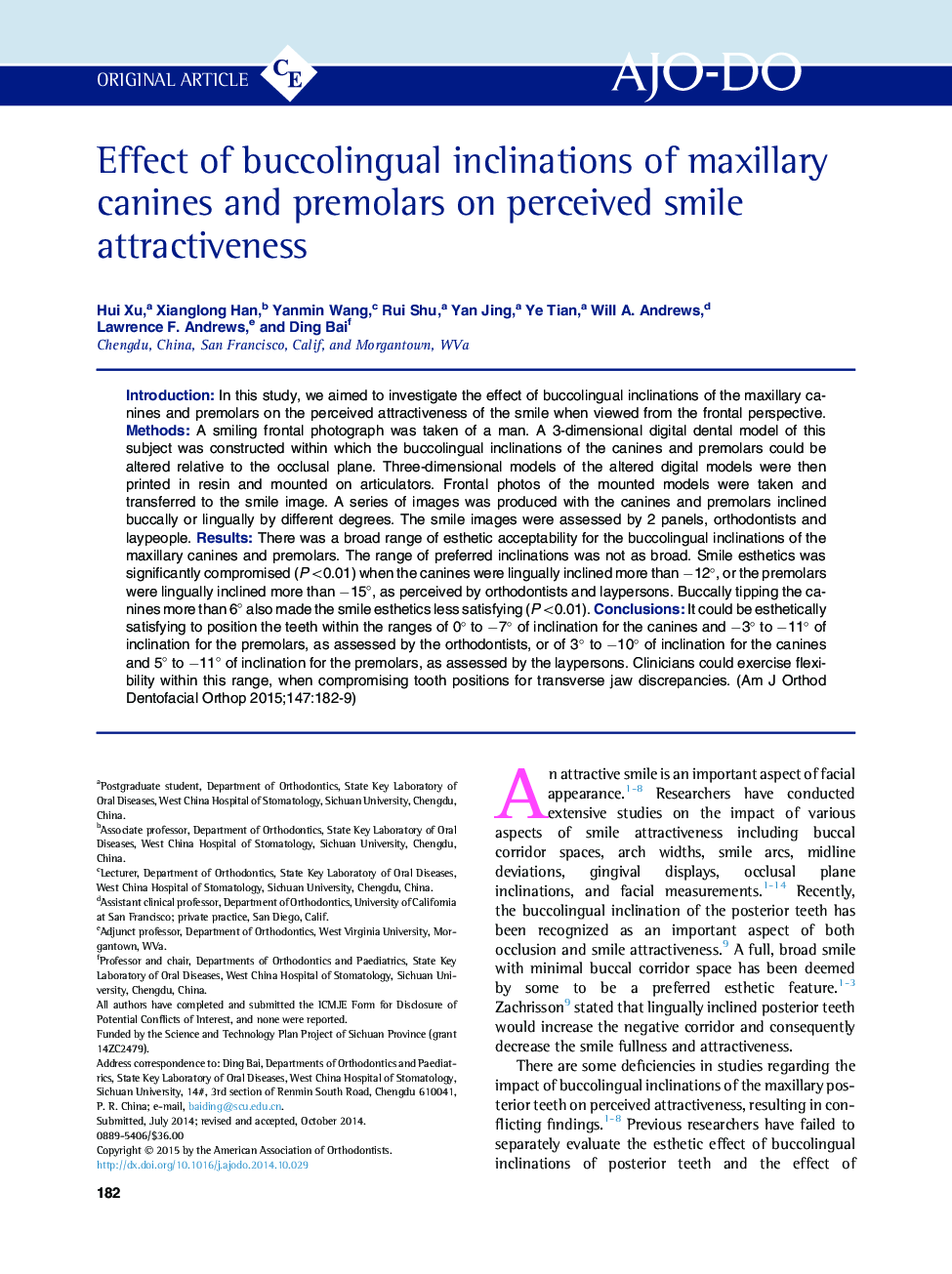| Article ID | Journal | Published Year | Pages | File Type |
|---|---|---|---|---|
| 3116077 | American Journal of Orthodontics and Dentofacial Orthopedics | 2015 | 8 Pages |
•We constructed and manipulated a series of 3-dimensional digital dental models.•Altered inclinations of the teeth were transferred from mounted models to the smile images.•Esthetic acceptability was wide for buccolingual inclination of maxillary canines and premolars.•The range of preferred inclinations was not so broad.
IntroductionIn this study, we aimed to investigate the effect of buccolingual inclinations of the maxillary canines and premolars on the perceived attractiveness of the smile when viewed from the frontal perspective.MethodsA smiling frontal photograph was taken of a man. A 3-dimensional digital dental model of this subject was constructed within which the buccolingual inclinations of the canines and premolars could be altered relative to the occlusal plane. Three-dimensional models of the altered digital models were then printed in resin and mounted on articulators. Frontal photos of the mounted models were taken and transferred to the smile image. A series of images was produced with the canines and premolars inclined buccally or lingually by different degrees. The smile images were assessed by 2 panels, orthodontists and laypeople.ResultsThere was a broad range of esthetic acceptability for the buccolingual inclinations of the maxillary canines and premolars. The range of preferred inclinations was not as broad. Smile esthetics was significantly compromised (P <0.01) when the canines were lingually inclined more than −12°, or the premolars were lingually inclined more than −15°, as perceived by orthodontists and laypersons. Buccally tipping the canines more than 6° also made the smile esthetics less satisfying (P <0.01).ConclusionsIt could be esthetically satisfying to position the teeth within the ranges of 0° to −7° of inclination for the canines and −3° to −11° of inclination for the premolars, as assessed by the orthodontists, or of 3° to −10° of inclination for the canines and 5° to −11° of inclination for the premolars, as assessed by the laypersons. Clinicians could exercise flexibility within this range, when compromising tooth positions for transverse jaw discrepancies.
